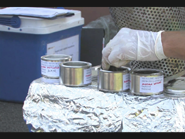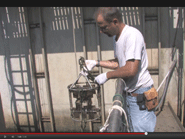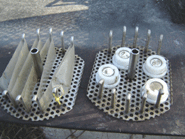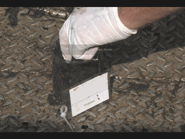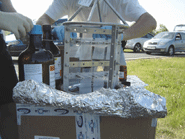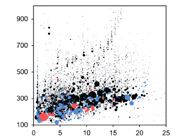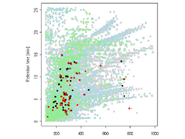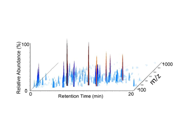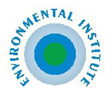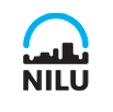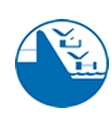You are here
Case Study 1
Validation and harmonisation of an analytical methodology for research laboratories: Oestrogens in sewage treatment effluents
This case study tested the procedured developed in Validation level 1 protocol (within-laboratory validation, research level) using a class of emerging contaminants, the steroid oestrogens.
Oestrogens can be both man made (e.g. ethinyl oestradiol, an active ingredient in the birth control pill) and of human origin (e.g. β oestradiol and oestrone). These 3 oestrogenic substances are excreted from humans and have been detected in wastewater treatment works’ final effluents entering rivers and estuaries across Europe and beyond. The levels entering the environment are typically very low (e.g. parts per trillion for ethinyl oestradiol), but their environmental effects, known as endocrine disruption, also occur at very low levels. Laboratory exposures of fish to both the chemicals alone and to effluents containing these chemicals have shown that they can interact with the oestrogen receptor in cells within male fish and cause the abnormal formation of an egg yolk precursor protein, vitellogenin. Some important recreational fish species downstream of sewage treatment works containing relatively high levels of these oestrogens have been shown to have a condition called intersex, where eggs are found in the testes of male fish. This condition has implications for the reproductive fitness of fish populations and their sustainability.
While endocrine disruption is not a new phenomenon, the oestrogens are currently neither regulated nor routinely monitored and are therefore classed as emerging pollutants. A number of high resolution chemical methods exist to measure these substances in effluents and the environment, but these are expensive, particularly where very low levels need to be measured in complex matrices such as effluents. A number of new methods exist which may be useful in this regard, but these largely exist at the research level and have not been validated for routine monitoring.
Case Study 1 used three levels of method through the Validation level 1 protocol: in vitro cellular methods that measure the total oestrogenicity of an effluent, in vivo methods that measure vitellogenin in body fluids (e.g. plasma) of fish exposed to effluents and in vitro direct measures of the oestrogens themselves (e.g. competitive and non-competitive ELISA’s).
The results of the intra-laboratory study are reported in the Final Report – Oestrogens in water intra-laboratory study.
For more details on this case study you can contact the Work Package leader Anne O'Neill
